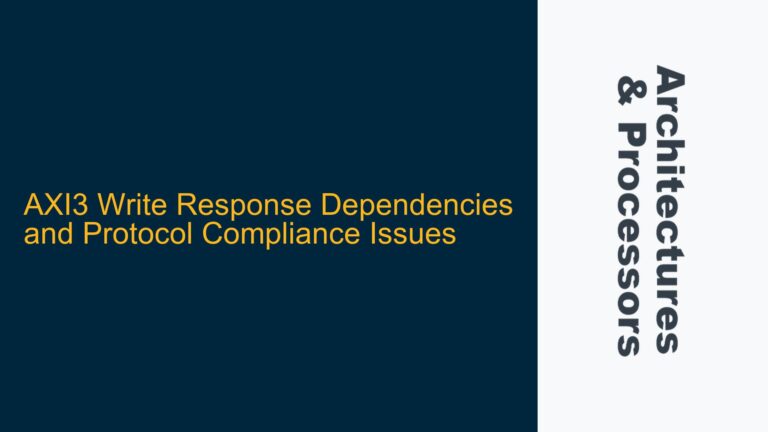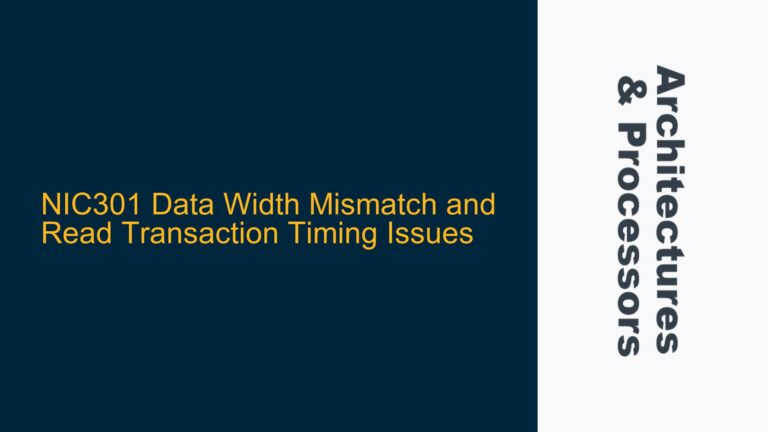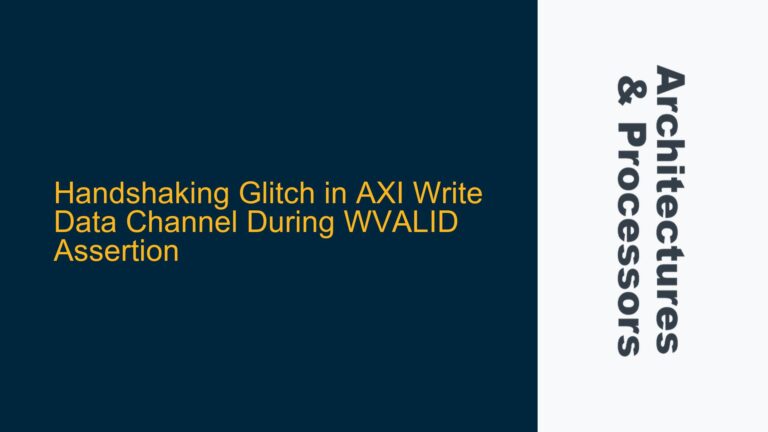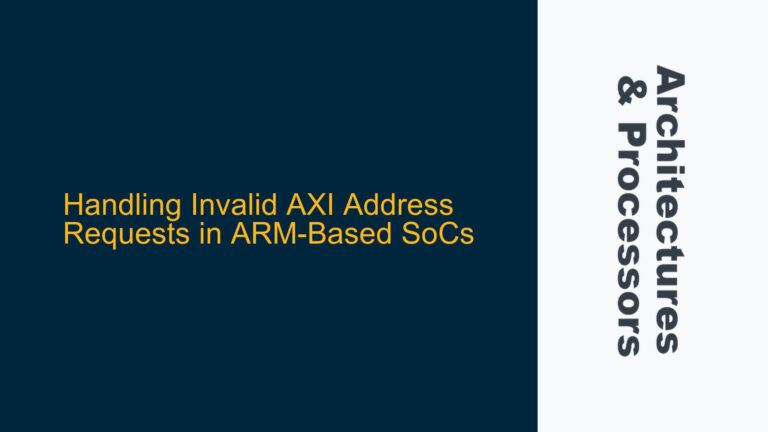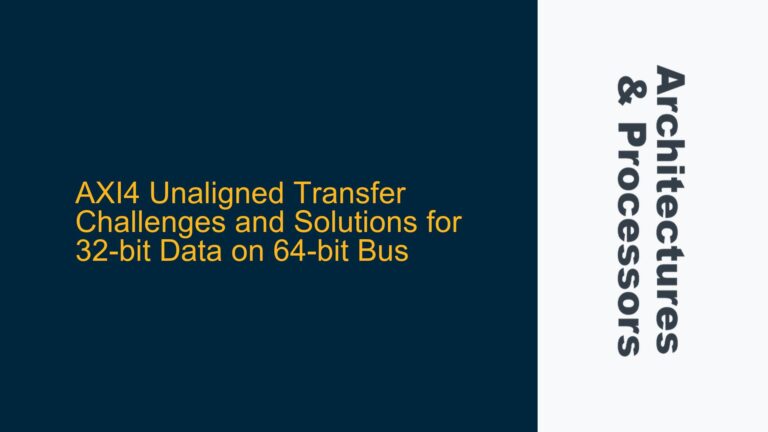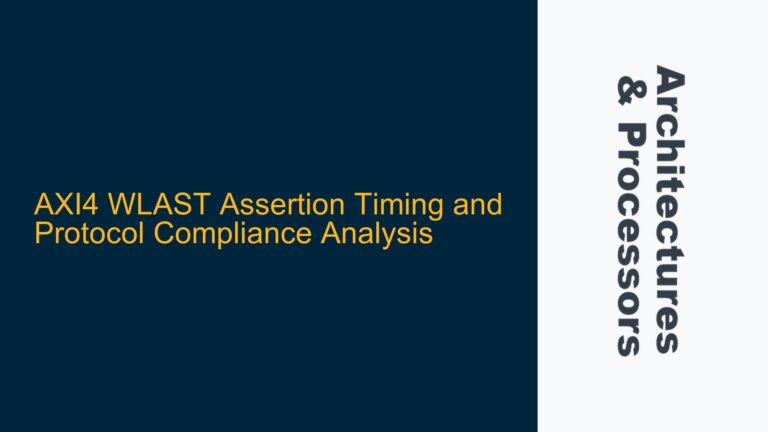AXI3 Write Response Dependencies and Protocol Compliance Issues
AXI3 Slave Returning BVALID Without AW Channel Handshake Completion In the AXI3 protocol, a critical issue arises when a slave device returns a write response (BVALID) on the B channel without completing the handshake on the AW channel (AWVALID and AWREADY). This behavior is permissible under the AXI3 specification but can lead to significant challenges…
